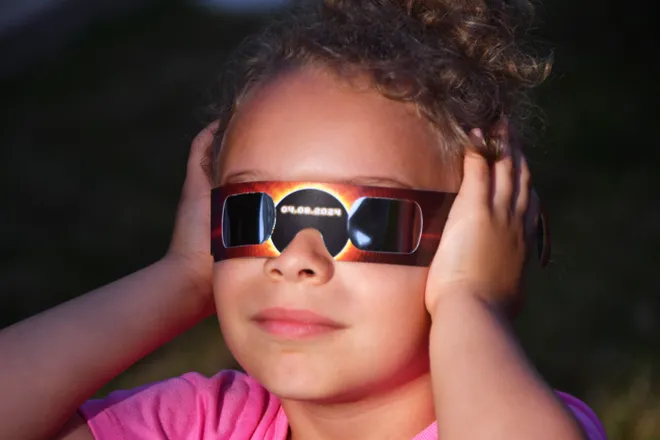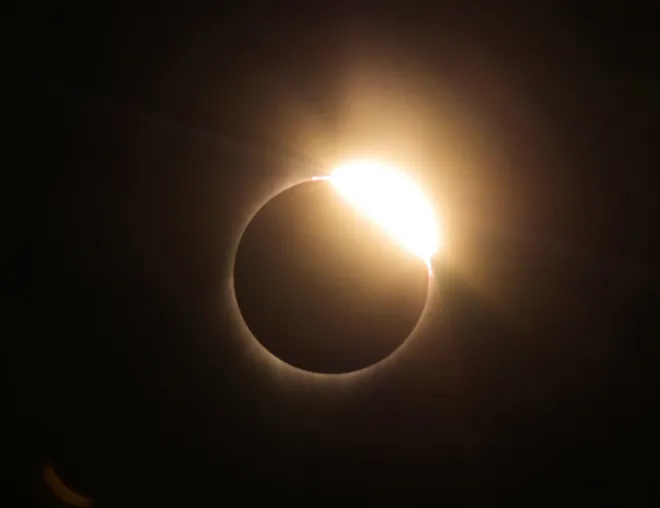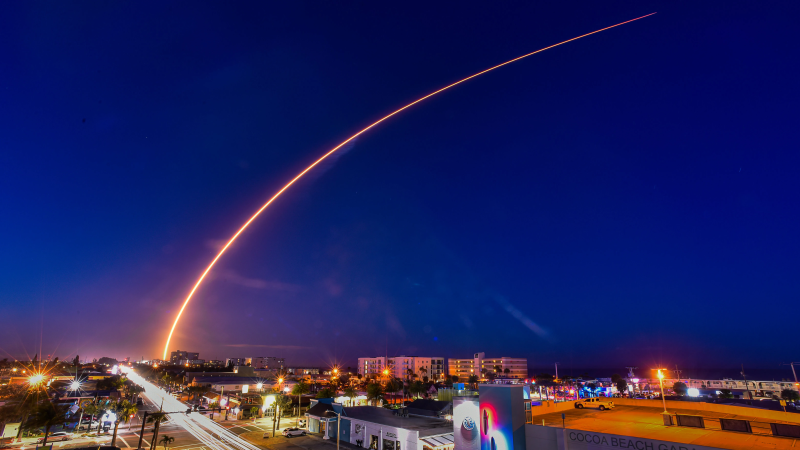Still need some solar eclipse glasses before April 8? Here's where you might find some
You're running out of time to get your own pair of certified glasses if you're wanting to catch a glimpse of the total solar eclipse that is nearly one week away.
If you're planning to be among the millions of people in the United States who will witness the spectacular sight on April 8, having a proper pair of glasses couldn't be more paramount. Until the moon completely blocks the sun's disc on the path of totality and ushers in darkness, the sun's rays will pose a danger to unprotected retinas gazing skyward.
At this point, proper eyewear may be hard to come by and some may be tempted to turn to alternative methods such as welding goggles. But if you know where to look, you may just luck out and find a vendor or even a local library with some still in stock.
Here's what to know about where to find last-minute solar eclipse glasses.

When is the 2024 total solar eclipse?Your guide to glasses, forecast, where to watch.
American Paper Optics, Warby Parker, among those offering glasses
Compared to regular sunglasses, proper eclipse glasses are 100,000 times darker to block nearly all visible, infrared and ultraviolet light and protect our sensitive retinas when looking upward near the sun.
That's why experts widely recommend them for those who will be watching as the upcoming solar eclipse charts a 115-mile-wide path of totality across North America.
Reputable vendors can be found on any eclipse websites like GreatAmericanEclipse.com and NationalEclipse.com, which sell a variety of eyewear products, along with plenty of other gadgets one may need to see the eclipse. Additionally, American Paper Optics, the nation's largest supplier of eclipse glasses, offers express shipping and includes a a countdown at the top of its website to let you know the deadline to make a purchase to get your glasses in time for the big day.
Warby Parker, which actually plans to give out free solar eclipse glasses beginning Monday, may also be a good place to check.
Here are some other companies offering specials and deals timed for the big deal, including offers on eclipse glasses.
Finally, you may want to check your local library or other public institutions in your area, as many of these places have been offering free eclipse glasses to residents. Just don't count on supplies still being available.
How to make sure your solar eclipse glasses aren't fakes
The responsibility of guiding American consumers to the safest eclipse glasses is largely left to the American Astronomical Society.
The organization maintains a curated list of approved vendors of solar eclipse glasses and its been updated to give priority to North American manufacturers for the upcoming astral event. Products you purchase that are listed on that site are guaranteed to be in compliance with the highest international safety standards.
Those standards are set by the International Organization for Standardization, which only vouches for solar eclipse glasses that are dark and strong enough to filter out a certain amount of the sun's harmful light.
Of course, plenty of fakes and cheap imitators are proliferating the online marketplace in the leadup to the eclipse.
A good rule of thumb is to avoid any vendors making the grand (and entirely made-up) claim that their products are endorsed by NASA. As the space agency reiterated to USA TODAY, it only advises that people get a pair of glasses, but does not recommend or certify any particular product.
The astronomical society also provides some helpful tips for other useful ways to spot scams and counterfeit glasses.
What else to know about the April 8 total solar eclipse

A total solar eclipse offers the unique opportunity for skygazers to witness the spectacular astral display with the naked eye – but only when the time is right.
Eclipse glasses are still very much needed for most of the show, so make sure to come prepared, according to NASA.
But when the moon moves completely in front of the sun and blocks its light, you'll know it's safe to fully take in the dazzling display. That moment is what is called "totality," whereby uncharacteristic darkness falls and all but the sun's outermost layer known as its corona makes a rare appearance to us here on Earth.

Hundreds of cities in 13 states are on the path of totality for this year's total solar eclipse, which will pass from southwest to northeast across North America. You won't want to miss it, as this is the last such eclipse in North American until 2044.
And as you make your eclipse-viewing plans, these interactive maps should help you chart the time and duration for when totality would occur in cities along the path.
Eric Lagatta covers breaking and trending news for USA TODAY. Reach him at elagatta@gannett.com
Disclaimer: The copyright of this article belongs to the original author. Reposting this article is solely for the purpose of information dissemination and does not constitute any investment advice. If there is any infringement, please contact us immediately. We will make corrections or deletions as necessary. Thank you.



